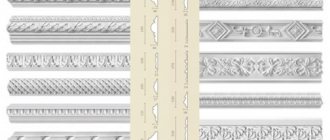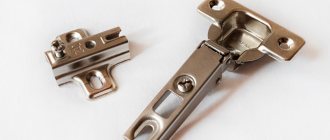What is the danger of having a stove and a refrigerator next to each other?
Often, with small kitchens, people ask: is it possible to place a gas stove and refrigerator next to each other? Why is this neighborhood best avoided? During operation, the gas stove becomes very hot. Especially with the oven on. And if household appliances are nearby, the heat from the stove very hotly heats the walls of the refrigerator.
This may cause it to overheat. It is not for nothing that refrigerator manufacturers indicate in the instructions the distance from the stove at which various household appliances should be located. This is necessary for free air circulation. And without a gap near the stove, the refrigerator will not cool.
In addition, some manufacturers have grilles for air circulation on the sides of the household appliance. And it is this area that will receive the heat from the stove next to it. And this is already fraught with damage to the refrigerator. If its walls are not metal, then due to exposure to high temperature the paint will turn yellow at the point of contact with the slab. And the plastic edging and handles can melt and crack. The same thing often happens with the rubber seal located in close proximity to the burners.
If the stove is nearby, it can be inconvenient to cook on it. The long handles of pans and pots will rest against the wall of the refrigerator. When cooking, drops and splashes often fly in all directions. Including on the surface of the refrigerator. And if, due to high temperature, it begins to work in increased mode, then there is a possibility of motor failure or a significant reduction in its service life.
Posting rules
In order to ensure that the use of these electrical appliances is comfortable for users and safe for the equipment itself, the following conditions must be met:
- Constant ventilation. Some microwave ovens have ventilated holes not only on the sides of the cabinet and on the back wall of the device, but also on the bottom panel. This means that to ensure maximum ventilation efficiency of this device, you need to take care of free air access to the bottom panel of the microwave. Firstly, the device must be equipped with legs so that the bottom wall is ventilated and suspended. The absence of legs can lead to overheating of the device and, consequently, its possible breakdown. Secondly, the surface on which the microwave will be installed must be hard, preferably made of a material that has thermal insulation properties. So materials such as a tablecloth, newspaper or blanket are definitely not suitable here. You also need to take into account the established distances that should separate the device from the walls and ceiling: 12 cm to the wall and 20 cm to the ceiling.
- Convenient operation. When placing a microwave oven on a refrigerator, you need to take into account the height of the latter, since many models of refrigeration devices can reach 2 meters. Placing a microwave oven on such a refrigerator is hardly reasonable, since to use the device for its intended purpose (heating food) you will have to place a chair or stepladder. Agree, it’s not very convenient, especially if you’re heating a bowl of soup. This creates an unnecessary opportunity to spill or get burned. In addition, with a refrigerator of such a height, you are unlikely to be able to maintain the required distance between the device and the ceiling.
We suggest you familiarize yourself with How to wash linen in a washing machine and by hand so that it does not shrink: temperature, mode, washing features
The optimal location for the microwave oven is at a height just below the user's shoulders. Following established standards, the device must be installed between 90 cm from the floor surface and 150 cm. This is considered a safe height.
- Frequency of use. Provided that the microwave will be used for defrosting semi-finished products and heating ready-made dishes, there are no restrictions for installing it on the refrigerator, since these operating modes are short-lived. If the use of this device for preparing the dishes itself will take a longer amount of time, during which the device will release a huge amount of thermal energy, which can affect the operation of the refrigeration condenser, which can disrupt the basic properties of the refrigeration device. Using a microwave oven this way can lead to increased electrical energy consumption and reduced operating time of the refrigerator. In such conditions, it is better to refrain from placing a microwave oven on the refrigerator compartment and try to avoid such proximity.
- Current protection. The instructions for any microwave oven state that the device must be grounded. Since the food heating device and the refrigerator will come into contact in one way or another, you need to make sure that both of these devices are connected to special sockets equipped with grounding.
It should also be noted that the location of the microwave oven directly on other household appliances allows service organizations to refuse even repairs under the warranty of these devices.
What to do if the kitchen is small and the refrigerator is next to the stove?
Is it possible to place a refrigerator next to a gas stove if it is not possible to place them at a distance? Yes, but with some conditions. According to manufacturers' standards, the stove must be at least 15 centimeters away from the refrigerator.
That is, it will be enough to leave a small gap between household appliances. The optimal size of empty space is 25 centimeters. This is enough so that the operating stove does not affect the cooling unit.
Technical standards for installing a refrigerator
A refrigerator is a complex appliance that will last a long time only if it is installed and connected correctly. The principle of its operation (to simplify) is based on the fact that refrigerant is driven in a circle, which takes heat from the refrigerator and freezer and releases it to the environment. Plus, there is a compressor that sets the system in motion, and it also needs to be cooled.
https://www.youtube.com/watch?v=qOUc4D8dsws
Different models of refrigerators carry out these processes differently, so in each specific case you must follow the instructions in the manual. It is usually not recommended to place the refrigerator close to other furniture and be sure to leave a gap of 5-10 cm, as well as a gap of 10-20 cm behind the back wall. By the way, it is precisely to ensure a guaranteed gap in non-built-in refrigerators that the top cover protrudes beyond the backdrop by 5-10 cm.
The stove next to the refrigerator: is it not possible or is it possible to install appliances this way?
Household appliances can be installed nearby. But the result of contact largely depends on the own thermal insulation of the stove or refrigerator. It is provided with a certain temperature regime even during the production period. It is done by default. And the temperature regime of the stove depends on its type.
A modern induction hob or electric oven does not heat up other surfaces nearby. This is due to good insulation and fan operation. Nowadays, stoves are designed in such a way that they do not affect surrounding objects, including the refrigerator. Therefore, there is virtually no risk of fire. In the modern version, kitchen units have become compatible objects.
But is it possible to place a refrigerator next to a stove that does not have thermal insulation? Upon contact in this case, the nearby metal surface will heat up. Even if the refrigerator is well insulated, its sensor will begin to respond more often than usual to an increase in temperature. As a result, the unit’s motor will work under heavy load and consume a lot of electricity.
Another real danger is uneven cooling. The temperature of the walls will vary greatly. Accordingly, freezing and condensation will occur on the coldest surface.
Rules for installing a microwave on a refrigerator
The microwave can be placed on the refrigerator, if you take into account some features of the device. If possible, it is better to prepare a place for the kitchen assistant, not close to the wall. Otherwise, failure to comply with the rule will lead to failure of one or both devices, and the price of new equipment or compensation for repairs and maintenance will hit your pocket hard.
There are several important rules that must be followed when installing a microwave on a refrigerator.
They are as follows:
- In many microwave devices, ventilation holes are located on different sides. If the microwave is located on the refrigerator, then it must stand on special legs so that the space necessary for ventilation remains between the device and the countertop. If there are no feet, or if the space between the bottom of the oven and the refrigerator is clogged with some kind of debris, then ventilation is ineffective, and this can lead to failure of the device.
- Also, there should be no materials such as oilcloth or paper between the microwave and the refrigerator. It is better to place the microwave on a sheet of plywood or any other material that can serve as an insulator.
- Whether you can install an oven on a refrigerator will depend on how high your refrigeration equipment is. If the refrigerator is two meters high, then placing it on the microwave is impractical and even dangerous. Firstly, the gap between the ceiling and the stove must be at least 20 cm, which relates to ventilation. Secondly, the high position of the microwave will lead to health risks. Imagine that you are heating a bowl of soup in the oven, and when you take it out from above, you can spill hot broth on yourself and get burned.
- Consider how often you use the microwave oven and how long you use it for. If you turn on the device several times a day for five minutes, then it’s okay. If you work with it for several hours a day, then it is better not to install it on the refrigerator.
Insulation
Is it possible to place a refrigerator next to the stove? Yes, if an insulating wall or cabinet is installed in the empty space that must be maintained between the equipment. It is made to order and can be adapted for sponges, gloves, detergents, etc. An alternative to a cabinet is a heat-resistant partition. It will provide excellent insulation between household appliances.
Between them, in the gap, you can put protective sheets made of organic materials (cork fiber, chipboard, etc.). But they are quite expensive and, when exposed to high temperatures, can become deformed and begin to melt. If you close the gap with inorganic materials (mineral fiber, asbestos cardboard), then they tolerate heat well. But when exposed to moisture, they lose their properties (except for fiberglass).
How is the insulation attached?
Is it possible to place a refrigerator next to the stove? Yes, as long as there is empty space or insulation between them. But its edges may not look very aesthetically pleasing. For example, a sheet of chipboard. Therefore, it is covered with a decorative film, laminated or hidden under a profile.
The best option is when the insulation is secured with double-sided tape. It is molded onto the refrigerator, and the second adhesive layer will securely hold the insulating sheets. It is useless to attach them to the stove, since the heating will cause the tape to lose its adhesive properties.
Splash and grease protection
If the refrigerator is next to the stove in the kitchen, how to protect the walls from splashes? Insulating sheets, which are laid between household appliances, protect against overheating of equipment, but not from splashes and drops of grease. The easiest way to protect against this is to make a screen of foil framed with a metal frame.
Hooks or magnets are used for fastenings. It is better not to use PVC film or similar materials. They do not withstand high temperatures well. And drops of fat flying around are usually very hot.











